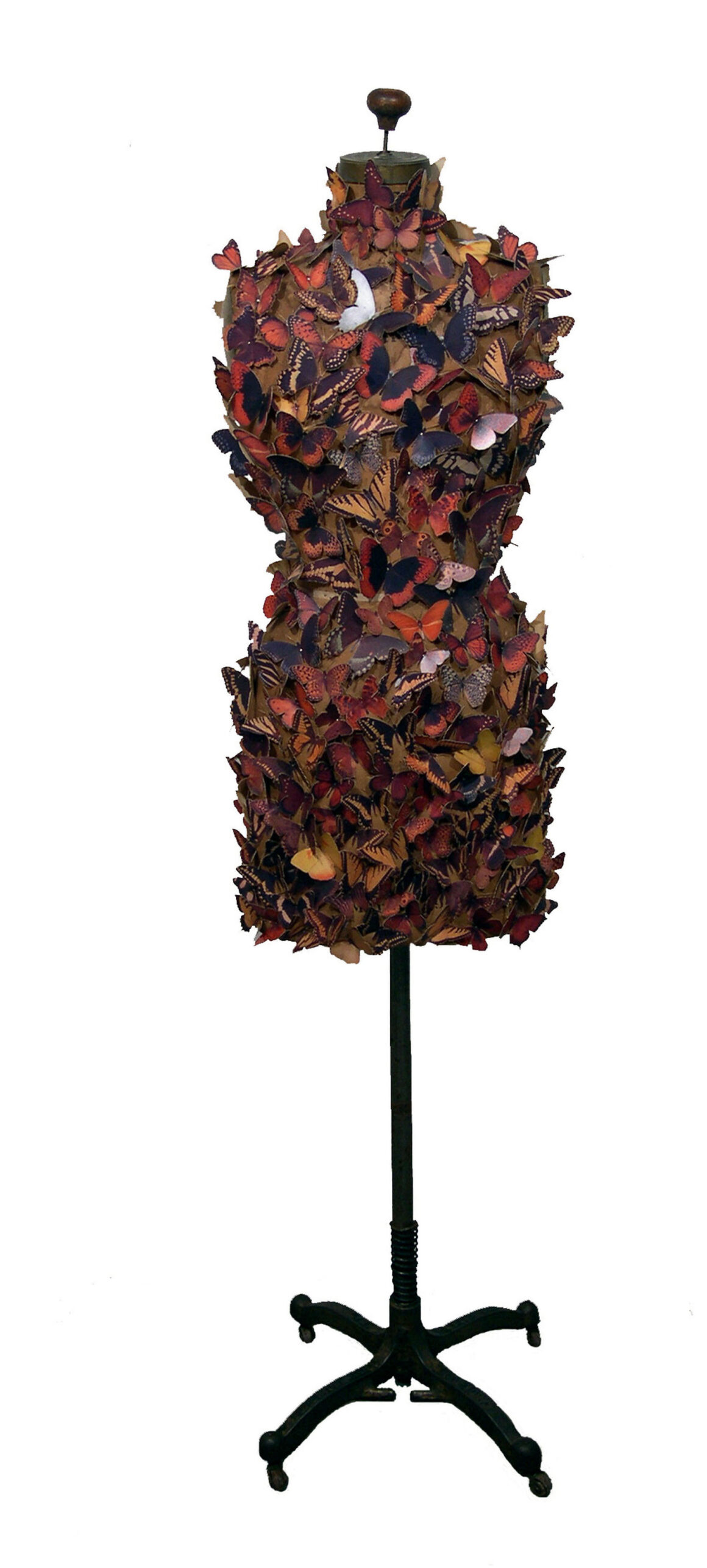— By Paul Forte
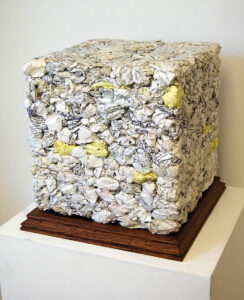
I’ve been writing poetry for almost as long as I’ve been making visual art. While this writing has perhaps had some bearing on my practice as a visual artist, the poetry or poetics of my visual work owes more to the evolution of conceptual art than to poetry per se (although, concrete poetry was a marginal influence). Before discussing conceptual art and the changes that it underwent in the 1970s, a distinction needs to be drawn between visual poetry and visually poetic artwork. This difference in light of the emergence of post-conceptual practices in the mid 1970s goes a long way toward making sense of my work as a whole. The impetus of much post-conceptual art involved what might be called a “cognitivist turn,” where the cognitive processes of knowing and understanding through art provided the basis for an aesthetic renewal. This renewal, inflected with conceptual concerns, would drive much of the art of the 1970s. Visual poets and artists making poetic objects during this period were consciously or otherwise under the sway of this aesthetic renewal. While the practices of many visually poetic artists and visual poets might be formally related, there is a fundamental difference between the two. What essentially distinguishes visual poetry from visually poetic artwork is that the former is fundamentally abstract in the way that all language is, whereas the latter is usually made from concrete, physical objects. Regardless of how imaginative each kind of work is, the experiential parameters of the poetic artwork seem broader and have an immediacy unmatched by visual poetry, however syntactically or typographically novel such work might be. Even visual poetry that discards syntax, distorts typography, or otherwise transforms the poem into a visual (or graphic) work, nevertheless still broadly functions in either a “linguistic” or semiotic way: It is a work meant to be viewed/read on a page or other two-dimensional surface. Visually poetic artworks, including two-dimensional collages and the like, on the other hand, are not limited in this way and realize a poetics in spatial and/or tactile terms through the material and form of the artwork. While the visual poem and the visually poetic artwork are both designed primarily to be seen, the latter has a pronounced material immediacy, and if words or text are also used as part of the work, they are in support of that immediacy and a visually evocative meaning or intent conveyed through the material. Written words and/or text are inherently visual and thus might also be manipulated typographically to suggest an image in addition to their semantic function, if there is one, concrete poetry being a good example of this. Consequently, there is a connection between visual poetry and visually poetic art. It should also be noted that when the language structure of some word and/or text-like work is minimal or presented as a trace or a fragment, such artworks might be considered “visually poetic” as opposed to visual poetry per se, although, given its invocation of language such work is necessarily conceptual.
An interesting relationship between visual poetry and visually poetic artwork can be extrapolated from remarks by literary scholar Willard Bohn about visual poetry. Bohn comments on how words and/or text are usually experienced and the significance of visual poetry in making us aware of the material dimensions of language: “The problem with words on the page, as with realistic artworks, is that the reader/viewer tends to look right through them. In the rush to grasp a poem’s meaning or to view the scene depicted in a painting, no attention is paid to the composition itself, which is treated as if it were transparent. Above all, therefore, visual poetry strives to motivate (or remotivate) the signifier, to restore its fundamental identity as a material object.” 1 Artworks that use images and/or objects for essentially allusive or poetic purposes, unlike much visual poetry, press the viewer/reader to see the image or object beyond its usual or accepted meaning or function. Seeing or experiencing visual poetry then seems inversely related to the viewing or experiencing of a visually poetic image or object. The visually poetic artwork is often based on found images and/or objects, the accepted meanings (and sometimes, functions) of which are preserved while at the same time offering the possibility of new meaning through novel juxtapositions and recontextualizations, combinations and changes meant to be viewed/read for their evocative poetic quality. Of course, some works of visual poetry might use, for example, collage or assemblage techniques, but the focus of these poems, however typographically striking, are usually based on the semantics of words, texts, and/or signs, as opposed to pictorial images or recognizable objects per se. Again, a visually poetic artwork might also use words and/or text, but its focus is always on the juxtaposed and recontextualized image and/or object, which is the ultimate bearer of the artist’s meaning or intent.

The visually poetic artwork or poetic object brings to mind the visual poetics of surrealism and its closely related idiom, magic realism. While the historical connections between surrealism (and magic realism) and conceptual art are tenuous at best, there are glimmers in the historical record of an underlying relationship. Marcel Duchamp’s groundbreaking readymades are a case in point, as are Rene Magritte’s word/image experiments. Arguably surreal or uncanny by virtue of their being everyday objects presented as art, Duchamp’s works not only force the viewer/reader to question the nature of art and the role of the artist, they also reveal the possibility of an inherently poetic quality in ordinary things. Duchamp’s ready-mades, long celebrated for their implicit disparagement of aesthetic values, nevertheless ultimately raised the stakes for the “aesthetic” appreciation of art through the juxtaposition of common things, particularly with his assisted readymades, in ways that enable the viewer/reader to value them for their poetic allusions, allusions often accompanied by inscriptions. According to poet Craig Dworkin this suggests that “the readymades were not just everyday objects nominated as art,” as they were often accompanied by inscriptions, and thus in his words these works embodied “a poetic/linguistic aspect from the start.” (Email, February 6, 2023) I prefer the term “designated” instead of “nominated.” The former seems a better description of Duchamp’s intention because it’s not certain that he was seeking a formal acknowledgement of his readymades as art, but Dworkin’s point is well taken. The more important question raised here is that while the act of designation as art must necessarily involve language in some sense, whether in the form of titles, artist statements, or curatorial commentary, can some designated works nevertheless be read for their allusions without the benefit of language? The issue as to whether images and/or objects can be read for connotations, poetic or otherwise, without linguistic direction or paraphrase is not fully resolved. The resolution in favor of visual meaning or intelligibility depends upon the nature of the images and/or objects employed by the artist, and particularly how well the artist has manipulated these things. Images and/or objects that are made to embody recognizable visual meaning based on shared cultural stock will more likely make sense to an audience without appealing to any linguistic input. The addition of supplemental language in terms of titles, commentaries, and so forth, accompanying artworks with culturally recognizable visual meaning, are nevertheless often useful in relating the finer details of said visual meaning. If considered for their poetic allusions, Duchamp’s readymades cannot be confined entirely to “anti-art” or relegated to the Dada camp. With time, if nothing else, this provocative work has acquired a poetic patina and become much more than a slap at bourgeois values. The readymade now seems to some as a conceptual act that also pointed toward a poetic impulse that later came to guide much surrealist art. This possibility is suggested by Dawn Ades when she observes that, “Marcel Duchamp’s readymade lit the fuse for the explosion of the object, as he took a mass-produced object out of context and gave it ‘a new thought.’ With the assisted readymade, Duchamp further explored ideas opened up by object and material. In ‘Why Not Sneeze, Rrose Selavy,’ for example, he placed marble cut to resemble sugar lumps in a birdcage, the visual deception revealed when one attempts to pick up the object.”2 (emphasis added) This work, among other assisted readymades, I contend can be regarded as a visually poetic artwork.
I cannot overlook the surreal or magic realist cast of much of my own art, due primarily to the work of Duchamp and Rene Magritte (and to some extent, Man Ray, and Max Ernst). However, early on my work was inspired by conceptual art, and I appreciated Duchamp as the prototypical conceptualist. Conceptual art as I understood and came to practice it was idea-oriented art that might use images and/or objects, found or otherwise, in poetic ways. Given this viewpoint, artwork such as mine can be considered an offspring or evolutionary form of conceptual art: A post-conceptual or cognitivist art that returned sensory experience and a sense of the poetic to the propagation of ideas. Assuming that the poetic nature of Duchamp’s readymades planted a seed that eventually blossomed into some forms of surrealism as well as conceptual and eventually post-conceptual art, it might be argued that the more stringent or analytical forms of conceptualism (exemplified by the work of Joseph Kosuth, and others) that developed in the late 1960s were an aberration. The attempt to reduce art making to philosophical discourse in the barest terms eventually hit a brick wall. This putative reductive turn failed to fully eliminate the aesthetic concerns of many artists, concerns often subsumed under the methods, techniques, and materials used to produce and exhibit even the primary vehicles of conceptual art, for example, text and photographs. Moreover, as it turns out reducing or attempting to reduce art to analytical propositions (which ironically were often poetically inflected) is not the only way to make art with a philosophical bearing, or to posit an inherently “conceptual” basis for all art if those are the artist’s intentions. Artmaking might take on a philosophical bearing in an older and more fundamental way. Pre-Socratic philosophy, philosophy prior to its reduction to metaphysics integrated poetic thought with reflection on existential questions and the meaning of life in ways that seemed to respond more fully to human experience. Now, a “poetics of conceptual art” might seem a contradiction in terms, but only from a strictly analytical perspective or approach to conceptual artmaking. A number of contemporary poetic conceptualists or conceptually oriented poets come to mind: The colorful language experiments of Lawrence Weiner, the emblematic works of Ian Hamilton Finlay, the poem objects of Dieter Rot, and the word pictures of Ed Ruscha, among others. And, of course, many artists involved with conceptual art were also practicing poets, artists like Vito Acconci and Carl Andre. Even one of the founders of conceptual art, Sol Lewitt, made work that while perhaps never intended to be appreciated poetically, seems in some respects intuitively so. And how can we forget that Marcel Duchamp was influenced by the poets Apollinaire and Mallarme. It appears that there has always been a poetic strain in at least some conceptual art, and in many cases the poetry inherent in it seemed to enhance the very ideas the work was intended to deliver.
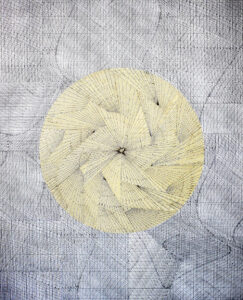
The work of philosopher Paul Crowther seems particularly relevant to visually poetic artwork as it relates to conceptual art. Crowther writes: “Many of the things we experience have quite specific cultural associations – which form a kind of contextual space – over and above their literal meaning or familiar function. Sometimes, indeed, we manipulate these things so that attention will be directed to the associated meanings. (This, of course, is a key stratagem of the advertising industry) Such manipulations can take various forms. For example, an object can be invested with associational meaning simply by being placed in a new context. Such investiture can also be brought about by physically modifying an object, or by juxtaposing one object with another, or by relating it to a title or text.” 3 Artwork based on the selection, juxtaposition and recontextualization of images and/or objects for the associations that they might occasion, connections with metaphorical and/or symbolic potential, seem more likely to sustain a poetic charge than art unconcerned with these things. When it comes to the poetic possibilities of images and/or objects to be used in this way the practice of the artist needs to be flexible and intuitive if the work is to have any vibrancy and offer surprises. An intuitive approach will largely avoid presenting preconceived or cliched results and better enable the viewer/reader to appreciate the work for its allusions and the ways that they are conveyed.
At this point it is helpful to return to the distinction between visual poetry and the visually poetic artwork and the inverse of Bohn’s observation about the restoration of the fundamental identity of the signifier in a visual poem (as a material object); the inversion being where the material of an artwork that has been juxtaposed and recontextualized might acquire allusive or metaphorical qualities in addition to the commonplace identities of these things. The notion of visual poetry has its roots in one interpretation of Ut pictura poesis (“as is painting so is poetry”), a belief that would eventually inspire, among other things, what came to be known as “emblematic poetry” in the 16th century. The sensibility informing this kind of visual poetry and shaped verse from about the same period seems to stretch back through the ages, both forms of poetry being precursors of things to come. Might Ut pictura poesis be completed by a modern sensibility bringing it full circle? Thus, “as is painting so is poetry,” but also: “as is poetry so is painting.” The fact that the inverted formulation is a tautology – that it says nothing about painting and poetry as such – might nullify my argument about the manipulation of found objects by the artist to suggest metaphorical associations, were it not for the evidence of the artwork itself. In this case, a bit of circular nonsense acquires a shimmer of meaning by virtue of experiential truth. Concrete poetry is a descendant of emblematic poetry, and this modern form of visual poetry to some extent influenced some art made after world war two. But by the early 1970s it was an intuitive sense that conceptual art was evolving that had the greatest impact on the artmaking of those artists still concerned with conceptual issues. The notion of found objects imparting meaning can be traced to the readymades, which may have contributed something important to the idea of poetic objects. Conceptual art evolved primarily through a fundamental reorientation toward ideas; that ideas might be grasped or enhanced through the senses and an understanding that the poetic presentation of ideas might also contribute significantly to understanding them. The foregrounding of ideas is the hallmark of all conceptual art, a practice presumably founded on a priori thought, where the dependence upon sensory experience in artmaking is reduced to a bare minimum. Here the analytical (or logocentric) exercise of the mind is considered the primary means and ultimately reason for making art. Ultimately this approach to conceptual art seemed to bring a fundamental question into stark relief: How is thinking manifested through art and taken up by the senses? We obviously can think in other than just linguistic, mathematical, or broadly speaking, discursive terms. So, while conceptual art was right to emphasize ideation in the making of art, thereby shifting the focus away from what was a moribund formalism that had run its course, in its most rigorous incarnations this radically new attitude seemed to downplay or deny the importance or even the possibility of sensory knowing or understanding through art. Conceptual art that embraced a strictly analytical approach thus became its Achilles heel. How this transpired first requires a good working description of the paradigm shift called “conceptual art.”
One such description of Conceptual art that has breadth and clarity is proposed by British philosopher, Matthew Kieran in his book, Revealing Art. Kieran writes: “What makes the artistic lineage of conceptual art into a coherent story is the concern with ready-made or mundane objects, the primacy of ideas, the foregrounding of language, the use of non-conventional artistic media, reflexivity and the rejection of traditional conceptions of sensory aesthetic experience.” 4 These concerns are widely recognized aspects of conceptual art, although, “the primacy of ideas,” is an inherent characteristic of all conceptually oriented art and not just one concern among others. My own work over the years has employed mundane objects, and has at times foregrounded language, used non-conventional media, and explored reflexivity. It has not, however, wholly rejected “traditional conceptions of sensory aesthetic experience.” Kieran goes on to make a comment that seems particularly relevant to the development of my work in relation to post-conceptual art: “Ironically enough, some pieces which are in part conceptual also involve sensory aesthetic appreciation [emphasis added]. They may not conform to traditional notions of beauty, or may involve materials we are not used to approaching in aesthetic terms, but there is no denying that sometimes they yield aesthetic rewards.” 5
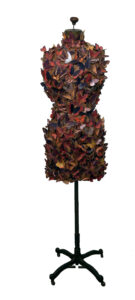
The question arises as to whether art that is partly (or broadly) conceptual by virtue of yielding some measure of aesthetic sensory appreciation is a result of the evolution of conceptual art or a reaction to its more stringent forms. Conceptual art in its most reductive and rigorous forms essentially held that objects and/or materials were contingent elements and not the point of the art. This was the basis for a so-called “dematerialized” approach to art making. However, we have come to believe that ideas in art are inseparable from some measure of sensory experience and moreover that the power of an idea often depends in part on how aesthetically rewarding the work is. An aesthetic image or object is valuable not simply because of the pleasure it affords, rather its value resides in the way it embodies an idea or ideas, a quality that is more likely to sustain the attention or engagement of the art viewer/reader. This is the essence of the relationship between the aesthetic and the cognitive,6 which involves the sensory apprehension of ideas. The sensory quality of an artwork can have significant conceptual bearing on an artwork and therefore be inseparable from the idea that informs it. Embodied ideas are more successful when they carry an aesthetic and/or poetic charge: They inspire and move us and perhaps most importantly, often generate new ideas. A cognitivist or “sensory-based conceptual art,” is not only potentially poetic way of making art through a variety of media, it can also make an important contribution to enhancing cognition itself. The evocative appearance of the artwork, in whatever form, is often an integral part of the idea that it embodies. The conclusion then is that a cognitivist orientation was bound to surface and drive the evolution of conceptual art toward a post-conceptual phase or condition of art making.
It is not surprising that the impact of conceptual art isn’t particularly evident in the work of many contemporary artists, especially those influenced by conceptual art
who went on to make art utilizing traditional media, techniques, and so forth. Yet, conceptual art laid the groundwork, or had an implicit effect on the artistic practice of many contemporary artists, and even implicitly informs the work of those born after the heyday of conceptual art. Conceptual art of the early to mid 1960s instilled an attitude that eventually blossomed into often poetic forms of essentially cognitivist art. With Kieran’s description in mind, it’s perhaps ironic that the original conceptual approach to art making led to art based upon the sensory apprehension of ideas. On the other hand, maybe conceptual art was always divided between the “purists,” those who would reduce the art experience to proposing ideas through “non-aesthetic” uses of text and/or photographs versus those who embraced sensory or broadly non-propositional modes as a necessary or inevitable aspect of all art, including much art with a conceptual orientation. The foregrounding of ideas remains a guiding principle in the artmaking of many contemporary artists, although many artists today have rejected strictly reductive approaches and accept the premise that sensory experience is important if not essential to the dissemination of ideas through art, a premise that would have been alien to many analytical conceptualists of the 1960s. A cognitivist approach to the making of art is the result of, or inspired an early awareness of the diverse manifestations and intermedia experiments of artforms moving away from the edicts of a reductive and “dematerialized” conceptual art. Cognitivist or post-conceptual forms of art, while overshadowed by the reemergence of more traditional artforms like painting and sculpture in the 1970s and 1980s, nevertheless continued a tradition of experimentation in the arts and quietly made important inroads in our understanding of the relationship between thinking and seeing, the cognitive and the aesthetic, and words and images or objects.
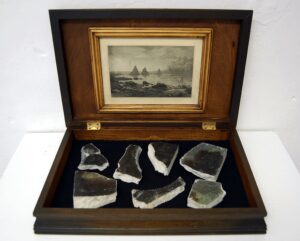
By the mid 1970s, conceptual art had largely shed its austere beginnings, giving way to a plethora of art forms and revitalized traditional techniques, many of which nevertheless remained idea oriented. It seemed that conceptual art had indeed changed. Sensory modes of experience came to the fore as artists also began to look at traditional media in a new light. Consequently, “idea art” in its initial reductive and “dematerialized” phase held sway from around the mid to late 1960s and by the early 1970s had largely lost its hold on the imaginations of many artists. For those of us who were working in the 1970s and rode the tail end of the paradigmatic conceptual shift (and the emergence of post-conceptualism), the historical description of conceptual art provided by Kieran is helpful in tracing the roots of much contemporary art. While this shift in artistic practice is common knowledge to many artists and arts professionals, a fuller discussion of its impact on the art making of those more “idiosyncratic” idea artists who emerged in the 1970s is long overdue.
Having intuited a cognitivist approach to art making in the mid 1970s, I began using found material in conjunction with traditional media, but with a new attitude. In this context, philosopher Paul Crowther again raises some interesting points regarding the nature of contemporary art, particularly from this period. According to Crowther, artwork in what he calls the “designation tradition” (works designated as art by the artist based on some theoretical standpoint, a fundamental conceptual strategy initiated by Duchamp’s ready-mades) can, in his words: “stake a claim to artistic status only insofar as they adopt the presentational formats of the nodal art practices.” 7 By nodal art practices, I believe that Crowther means primarily those culturally sanctioned practices like painting and sculpture, the presentational formats of which are then adopted for unconventional purposes. To lay claim to artistic status, however, works in the designation tradition must do more than just embrace the presentational formats of recognized art practices. By simply presenting a lackluster work in the manner of, say, a painting, will not in and of itself somehow give the work the vibrancy needed to engage people. Nevertheless, Crowther is on to something when he proposes that adopting such measures for these works leads to an interesting possibility. Namely, it’s possible to produce a work that he calls a “connotative image,” even if it is, according to Crowther, “comprised entirely of elements that were not actually made by the artist.” 8 Borrowing elements to make art, of course, has become routine with many contemporary artists. But to what end? If this practice results in art that foregoes, in Crowther’s words, “a range of specific connotational meaning that is recognizable on the basis of shared cultural stock,” 9 then the art may not have much long-term significance. And that is part of the problem. Connotative images, evocative works that for example employ metaphor and/or symbolism, seem to be one solution to the further development of a cognitivist art, an art with both conceptual and aesthetic integrity.
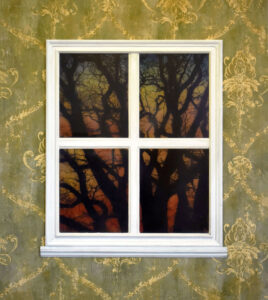
Beyond vexing questions about the nature of originality, merely embracing the presentational formats of recognized art practices remains a problem because appropriation of elements not made by the artist for little more than the sake of novelty or to make a theoretical point, or to advance a curatorial agenda, in my opinion, can seriously undermine an appreciation of the cognitive value of art. Such practices are essentially retrograde and echo the worst aspects of an ideologically and/or economically driven “conceptualism.” Appropriated or not, the point is to use material and media in ways that engage the mind and senses imaginatively and critically. Art that does this effectively seems to better enable the production of a connotative image. The problem is very complex because many cultural practices today are undeniably creative and sometimes virtually indistinguishable from practices considered artistic. I think some artists, particularly those with a “sociological interest” in art, either confuse these terms (creative and artistic) or take advantage of the confusion. I am not suggesting that these practices have no value to the culture, only that their full status as art is problematic. A work with a socio-political message only becomes artful when it also explores the cognitive/aesthetic nexus of media with a concomitant emphasis on the artist’s individual style. A socio-political work might creatively inform the viewer/reader about current issues without providing an aesthetic experience through an individual re-working of media, but this practice cannot be considered inherently artistic. Crowther is suggesting, and I am basically in agreement, that there is something fundamental about an aesthetic experience; something essential that art offers that other cultural practices, however creative, cannot. To support his argument about the possibility of connotative images, he offers two tests that might enable us to recognize work in the designation tradition that holds out a possibility of this experience. The tests are: “(a) a work’s having a phenomenal structure or physical presence that is engrossing in its own right, and (b) it is having a specific connotative significance (or range of such significance) that is recognizable on the basis of shared cultural stock without reference to accompanying explanatory texts.” 10
While I empathize with Crowther’s overall aims, my view regarding descriptive or explanatory texts is not as prohibitive as his position seems to be. Unfortunately, such erstwhile texts are sometimes a distraction or even counter-productive when the writing provided by an artist or a curator to accompany the art has little or nothing to do with the phenomenal properties of the work at hand and is focused primarily on the social and/or political content of the art. So, I understand Crowther’s focus on an unmediated experience up to a point. But I hesitate to downplay the use of explanatory or descriptive texts in support of art, my own or anyone else’s, provided that these texts address the making of the work and its phenomenal properties in relation to any content in clear and appropriate terms. After all, phenomenological reflection on artwork that aspires to what Crowther calls a “post-curatorial status,” whether presented as an explanatory text to introduce the artwork or appearing in a related cultural context, such as a critical review, could be valuable by adding a fresh perspective on the art that might not occur to some. Moreover, text is already implicated when titles and/or work descriptions are presented along with the art in an exhibition setting. Providing such information often enhances the experience of the art and can lead to a deeper appreciation or understanding of it.
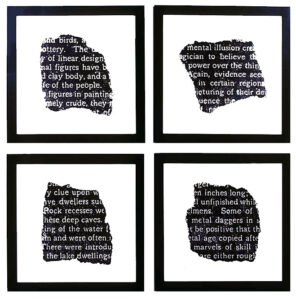
The notion of art comprised of elements that the artist finds being capable of offering a range of connotative significance, again, “recognizable on the basis of shared cultural stock,” also points toward the solution of a problem endemic in the contemporary art world. This involves what Crowther terms “curatorial art,” art that often has little to say to an art viewing public unfamiliar with or uninterested in narrow curatorial agendas. Crowther’s point is that much of this art exists simply because of the curatorial and managerial demands of the contemporary art world and little more. Art that does not accede to these demands, but instead opens avenues for self-reflection and a greater understanding of the meaning and function of art in our lives will in the end trump curatorial art for no other reason than that it truly speaks to people. The artist can never know conclusively whether his or her art truly speaks to people. But if it inspires others to be more creative in their lives, or if the work enables them to think about something in a new way, or if it just makes them feel good about being human then it speaks to them in some fundamental way. I believe that the real value of art involves how it can contribute to the personal growth of people; how it can show a way toward a more meaningful life. Perhaps most importantly, such art also advances artistic freedom.
A post-conceptual and subsequent cognitive approach to art making is revolutionary, not just because it maintains the primacy of ideas and renews the sensory aspects involved in the making and experiencing of those ideas, but revolutionary in the sense of expanding our cognitive abilities through aesthetic experience. A cognitive approach to the making and experiencing of art sets artist and audience alike free to engage the imagination on any number of fronts. The visually poetic artwork is at the forefront of this revolutionary change. The poetry of thought or poetic thought, expressed through images and/or objects can deepen our sense of being in the world by instilling wonder. The best art being made today, inside or outside the art world, offers what the best art has always offered: New ways of knowing and understanding ourselves and the world. Whether such art does or doesn’t succeed in the art market is incidental to its larger purpose. Most artists who work at this level would probably agree with this. For serious artists, art is essentially a vitally important way of exploring what it means to be human.
– Paul Forte, 2023
Footnotes
- Willard Bohn, Modern Visual Poetry, Associated University Presses, 2001, p.16.
- Dawn Ades, “The Poetic Object,” in Surrealism Beyond Borders, editors Stephanie D’Alessandro & Matthew Gale, exhibition catalog, The Metropolitan Museum of Art, 2022. p.270.
- Paul Crowther, The Transhistorical Image, Philosophizing Art and its History, Cambridge University Press, 2002, p.180.
- Matthew Kieran, Revealing Art. Routledge; London and New York, 2005. p.131.
- Ibid. p. 131.
- A good working definition of “cognitive” can be had from philosopher, Nelson Goodman: “Under ‘cognitive’ I include all aspects of knowing and understanding, from perceptual discrimination through pattern recognition and emotive insight to logical inference.” See Goodman, Of Mind and Other Matters, Harvard University Press, 1984. p.84. According to Goodman, “cognitive” and “conceptual” are not interchangeable terms. “Cognitive” is the overriding term here.
- Paul Crowther, “Cultural Exclusion, Normativity, and the Definition of Art,” The Journal of Aesthetics and Art Criticism, Spring 2003. p. 129
- Ibid. p.129.
- Ibid. p.129.
- Ibid. p.129.
